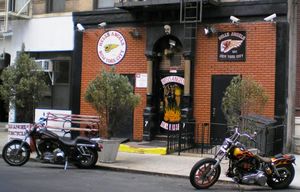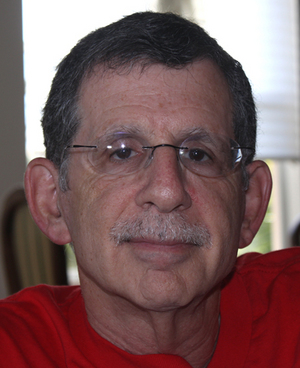Just when you thought all gangs in the world represent themselves in the way we’d expect them to be–the longtime gang/organization Hells Angels still insist that they aren’t anything more than a benign group who love motorcycles and long road trips. However, you can’t blame the international public (or law enforcement) for thinking otherwise. Just in the last ten years, there’s been numerous major crime busts against members of the Hells Angels. All of this when we learn in the media that they were supposedly at their most viscous in 1969 when they tried to assassinate Mick Jagger after the big-lipped one pointed a finger at the gang for causing the stabbing death of an audience member at a Rolling Stones concert. What a coincidence all this publicity happens smack dab on the 60th anniversary of the forming of Hells Angels. Considering the legendary stories about their power, it makes you wonder if it’s more than coincidence.
While various segments of the organization still debate when and who started the Hells Angels–most historians are sure it started in March of 1948 down in Fontana, California where motorcycles and racecars are perennially popular. The name came indirectly from the Flying Tigers in WWII who were part of the 303rd Bombardment Group who, as a unit, voted to be subtitled “Hell’s Angels” in 1944. In 1948, motorcycles were starting to become a popular pastime in America and the name Hells Angels Motorcycle Club was the official title given by one of those former members of the 303rd above. His name was Arvid Olsen who’s officially credited by the Hells Angels today for merely giving the name of the group in Fontana rather than joining the organization. What the details and motivations behind that story are is still shrouded in myth, which isn’t all that surprising.
The organization as a whole, though, has reportedly been bothered by the media over the years giving the notion that former trouble pilots in WWII formed and joined the Hells Angels when that isn’t true. The Hells Angels are always quick to point out that no one other than Olsen, mentioned above, had any connection with the organization. Plus, they say wouldn’t have accepted WWII pilots who still had a penchant for violence due to prolonged periods of killing from the war. Yet, the organization had (and still have) documented members who are tied to crime of various sorts–mostly violence and drug crimes.
But with that truth in mind, can the whole organization be singled out as a blight to American values in a time when most gangs are considered (by the mainstream anyway) to be evil? Even the organization itself struggles with its image–especially when they actually work hard on a respectable charity each year to give toys to needy children. Professional people, too, have been known to join Hells Angels, merely as connoisseurs of Harley-Davidson motorcycles and taking road trips with fellow members as a metaphorical sense of freedom and brotherhood.
Well, you really have to dig a little deeper to get a fuller picture of this organization…which only gets more complex as you search…
The 1960’s and the modern impressions of what the Hells Angels are…
It’s no wonder there’s such a tug-of-war with the international public’s impression of the Hells Angels when so much of its history seems to be fabricated by not only the media but factions within the organization itself. You might say, also, that the violence they’ve been known to impart is via factions as what happens with a lot of worldwide organizations. They nonetheless were formed to show an independent streak (and almost ritualistic gear as you’d see in a secret society) right from the start. Their famous insignia shows a death’s head–and they also were adamant on using their famous red on white colors on mysterious patches they wear that provides the name of the branch they belong to. Those patches have a lot of internal meanings only Hells Angels know, too, but they’ll never make it known what’s behind those meanings.
As secretive as some of their mission statements are–it’s quite clear they have one they wear on their sleeve…literally. One of the famous patches they wear has a giant “1%” on it to show that they’re the reported 1% of all motorcycle groups in the world who don’t abide by the law.
When you equate that above sentiment to the 1960’s–you can see how the Hells Angels thrived through that turbulent decade. Their members list shot up like a thermometer in heat during that time frame and perhaps when some of the most violent factions started. They probably also were easy targets just based on the edginess they conveyed against any authority or at public events. Wrong or right, the public perception of the organization changed forever during that infamous 1969 concert by the Rolling Stones in Altamont, California. If you read the minutest of details about what happened there, though, you can blame multiple reasons for the incident that ultimately makes everybody responsible.
You’d probably be surprised to hear me say that the Hells Angels were perhaps the least to blame–even though it can’t be denied that their heavy drug use during this period probably instigated the public perceptions of them being more violent and ultimately murderous individuals. The truth is, the crowd at the concert was taunting the Hells Angels after they were reportedly hired by The Grateful Dead to be security at the concert. Because the public perception of the Angels was suspect by many–it didn’t help matters when seeing them hired as security at a rock concert. Once a shoving match ensued between the crowd (who started it) and the Angels, a woman in the crowd fired a pistol toward the Angels and (perhaps accidentally) wounded one of the members. You’ve undoubtedly heard about how the woman was subsequently stabbed to death by various Hells Angels…likely to defend themselves against what they thought would be a mass murder of their own.
With Mick Jagger later pointing fingers at the Hells Angels for instigating the whole thing–the reasons for the hit on him become clearer…despite that unfortunate truth making things worse. And let’s be honest: The 1960’s made everything worse in America–mostly as the result of drugs distorting good judgment and dissatisfaction with our own government. That potentially volcanic combination unfortunately changed people and many organizations for the worst. The Hells Angels never have recovered from that perception. Drugs, too, are still a part of the factions that obviously developed in the organization.
As the Hells Angels expanded globally during the 1960’s (most famously in London, England in 1969)–it should be noted that a lot of rival motorcycle gangs were going concurrently…if even before the Hells Angels started. Already in 1935, The Outlaws Motorcycle Club was setting the perception of outlaws on two wheels, living on the road and giving strong payback to anybody who crossed them. As with most gang rivalry, the same thing happened with motorcycle gangs and the rivals of the Hells Angels. What’s odd is that even though a lot of that rivalry seems to be stuck in the time warp of decades past, much of that is still happening to keep the Hell Angels in the news as a still-powerful and secretive society…
The internal criminal investigations of the Hells Angels…
After decades of being built up in pop culture as being the most powerful outlaw motorcycle group in the world (thanks to movies made about them and wildly divergent public opinion)–it makes one wonder just how powerful the Hells Angels have become. There isn’t any doubt that they’re still as active as ever to this day–yet have probably dozens of factions that seem to have developed in the last 30-40 years who either live clean or don’t. It’s too bad one major organization can’t unify toward one cause and stick with it. But the Hells Angels have probably become too big and powerful–hence dividing up those who wanted to take it in a more criminal direction and those who just want it to be a benign motorcycle club that occasionally enjoys giving back to charities.
If you want to call it strange or not–there seems to be more criminal investigations and violent activity from the Hells Angels just in the last five years than there was for a long time. There aren’t quite as many in the U.S.–but oddly in the Canadian branches and ones overseas. Most of the cases in the U.S. involve brawls with rival gangs. One other infamous case occurred in New York City occurred just last year when the Hells Angels were accused of beating a woman to death outside their NYC headquarters. When the NYPD actually raided the headquarters after getting a search warrant, it was quite clear that the Hells Angels were primary targets of the police and being treated as part of the ongoing battles with organized crime.
During that NYC case last year, the Hells Angels insisted they had nothing to do with the beating of that woman. The general statement is always “if you respect us, we respect you.” This either proves that they’re about as powerful as the mob and can worm their way out of crimes–or the more likely assessment that they have some members who go on the wrong side and others that don’t. As I alluded to earlier–no organization is going to have everybody acting uniformly, especially if drugs sometimes get into the picture.
Up in Canada is where the biggest drug problems in the Hells Angels apparently are happening. Numerous drug busts have occurred (as well as being busted for illegal automatic weapons possession) and general investigations are being done behind organized crime connections. Numerous investigations by law enforcement using the word “Project” at the beginning of every title show the intense distrust of the Hells Angels worldwide. It seems to be the 1960’s all over again for the organization after a number of years there being relatively quiet and giving some people the impression they hardly existed any more.
___
What does this seeming new power for the Hells Angels mean in the bigger picture? It’s too bad that resources are wasted investigating them so intensely when most general corporations that decide what everybody consumes literally and figuratively is actually more criminal on a larger scale. As I insinuated at the beginning of this article, maybe that reference to the Mick Jagger incident was a ploy by the Hells Angels to use the media (and using the symbolism of their 60th anniversary) to get writers like me and the general populace to read up on the realities behind the organization to sort out the good and the bad.
Any powerful organization that chooses to be akin to a secret society, though, is going to continue to be misunderstood–if have abuse of power in some of the inner circles getting misconstrued as a mission statement.




